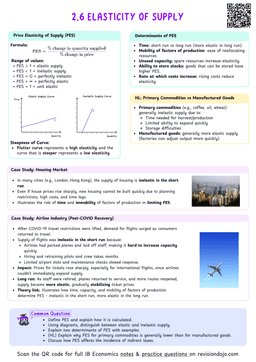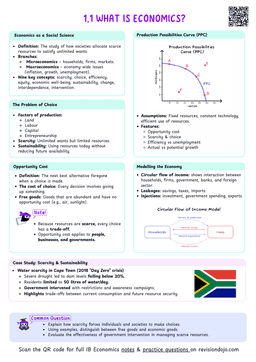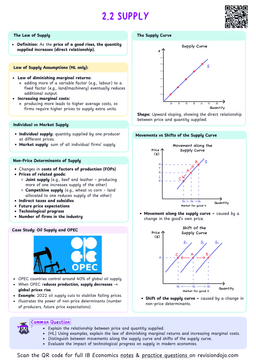Aggregate supply
The total output produced in an economy at all possible price levels, over a specific time period, ceteris paribus.
Differentiation of short-run and long-run in macroeconomics
In microeconomics, we saw that:
- In the short-run, at least one factor of production is fixed.
- In the long-run, all factors of production are variable.
A similar differentiation of short-run and long-run exists in macroeconomics:
- In the short-run, the cost of factors of production (especially wages) are fixed (they are not affected by changes in price levels).
- In the long-run, the costs of factors of production are variable (they adjust to the price level).
Short-run aggregate supply (SRAS) curve
Short-run aggregate supply (SRAS)
The total output produced in an economy at all possible price levels, when the costs of factors of production are fixed, ceteris paribus.
- In the short-run, the costs of the factors of production are fixed.
- Therefore, producers across the economy increase their production of output (real GDP) only if there is an increase in the price level (PL). This is because:
- An increase in price level (PL) increases the revenues firms receive from selling their goods and services, while their fixed costs (e.g., wages, rent) remain unchanged (in the short run).
- This results in higher profit margins for firms, incentivising them to increase their production.
- Resultantly, the aggregate supply (total supply in the economy) of total output (real GDP), increases as the price level (PL) increases.
- Contrarily, if the price level (PL) decreases, producers across the economy decrease their production of total output (real GDP). This is because:
- An decrease in price level (PL) decreases the revenues firms receive from selling their goods and services, while their fixed costs (e.g., wages, rent) remain unchanged (in the short run).
- This results in lower profit margins for firms, encouraging firms to reduce their production.
- Resultantly, the aggregate supply (total supply in the economy) of total output (real GDP), decreases as the price level (PL) decreases.
An increase in the price level increases the revenues firms receive from selling their goods and services because the price level reflects the average prices of goods and services in the economy.
So when the price level rises, the selling prices of firms' outputs increase.
The positive relationship between the price level (PL) and the aggregate supply of total output (real GDP) in the short-run, is represented by the short-run aggregate supply curve (SRAS curve) below.
The SRAS curve (Figure 1) visually represents the positive relationship between the price level (vertical axis) and real GDP (horizontal axis). As can be seen by the upward-sloping curve:
- As the price level (PL) of an economy increases, the short-run aggregate supply of real output (of all economy's producers) increases.
- As the price level (PL) of an economy decreases, the short-run aggregate supply decreases.
Pay attention to what the 'x axis' and 'y axis' represent. Students often mislabel diagrams in macroeconomics. Remember:
- Microeconomics:
- X axis: Quantity.
- Y axis: Price.
- Macroeconomics:
- X axis: Real GDP.
- Y axis: Price Level.


